We are constantly using one app or another on our phones. What are these applications?
Mobile applications are basically software developed to install and use on devices like smartphones, tablets, or smartwatches. To develop and keep these apps up to date we need app developers. We will later find out here the best mobile app developer for hire.
A brief introduction to mobile applications
The three main types of mobile applications are native applications, web applications, and hybrid applications. We mostly use social media applications, banking applications, gaming applications, and so on. All of these are a form of native applications.
Native applications are designed to run on platforms like android, iOS, or windows, Needless to mention, we download these applications from application distribution platforms like the google play store for android or apple app store for iOS. These applications are designed to provide a flexible user interface and function at the maximum level. These applications can be used in offline mode as well.
Web-based applications are designed to run on HTML, CSS, and java scripts. The information entered on these applications is stored on the internet server. Hence, in order to function, they require internet connectivity.
As the name suggests, hybrid applications are a combination of both native and web applications. It supports platforms for both of these applications. Not let’s look at 8 candidates for the best framework for app development.
Best 8 application development frameworks
1. React Native

React Native is the most highly recommended among other mobile app frameworks. It is an open-source framework created by Facebook and the community and implemented for the first time in the Facebook newsfeed in 2011.
React Native uses JavaScript as its diction which is the most widely used web development language, hence making React Native more flexible to use. It is a cross-platform application development framework, meaning, it can be used to develop android applications, iOS as well as windows.
Once a code is written in React Native it can be used on any of the mobile platforms to develop other applications. It also allows a developer to include third-party packages as well as make modifications to a code while developing an application.
2. Flutter
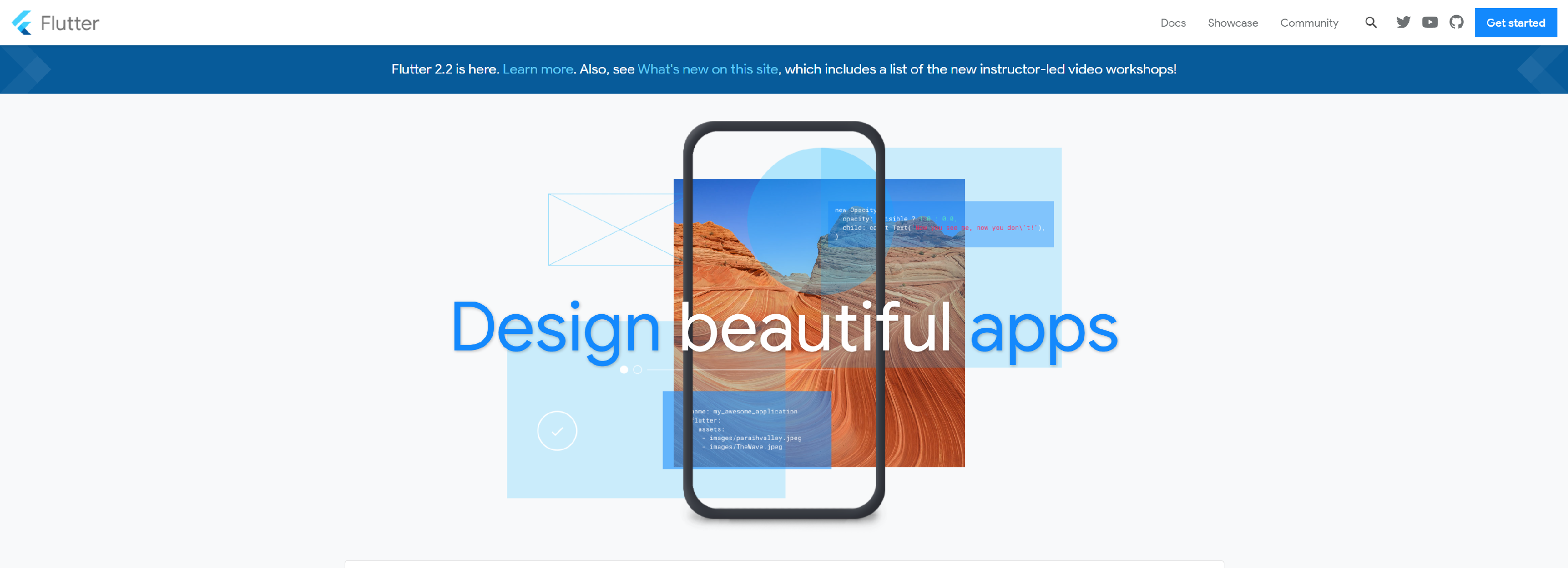
Flutter was developed by Google and the community. It is an open-source UI software that came out in May 2017.
Flutter is a cross-platform application used to develop applications for android, iOS, Linux, windows. It has a single codebase. Flutter uses Dart as its base language. The dart framework uses a skia c++ engine which helps illuminate the graphics. The application programming interface (API) is instilled with all the features like scrolling, navigation, icons, and fonts, required to develop applications.
If we are using Flutter then we do not have to rely on any other third-party applications.
3. Xamarin
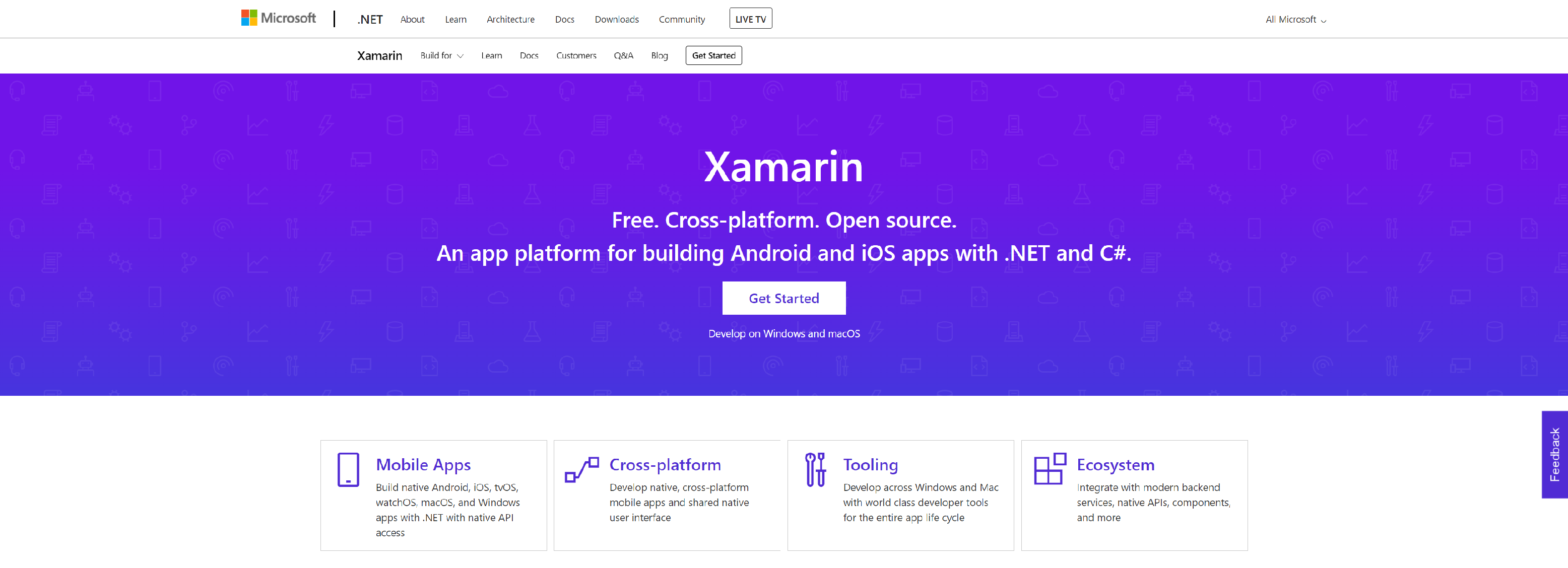
Xamarin is owned by Microsoft, founded in May 2011. It is also a cross-platform application used across Android, iOS, and windows.
Xamarin is an abstraction layer that manages the transmission of the shared code with the platform code. It uses C# language, which is a faster coding process and requires lesser codes. Developing applications with Xamarin is cost-effective and provides both quality and performance. Some examples of mobile apps built on Xamarin are- Alaska Airlines, Picturex, Captio, the World Bank, and so on.
4. Ionic
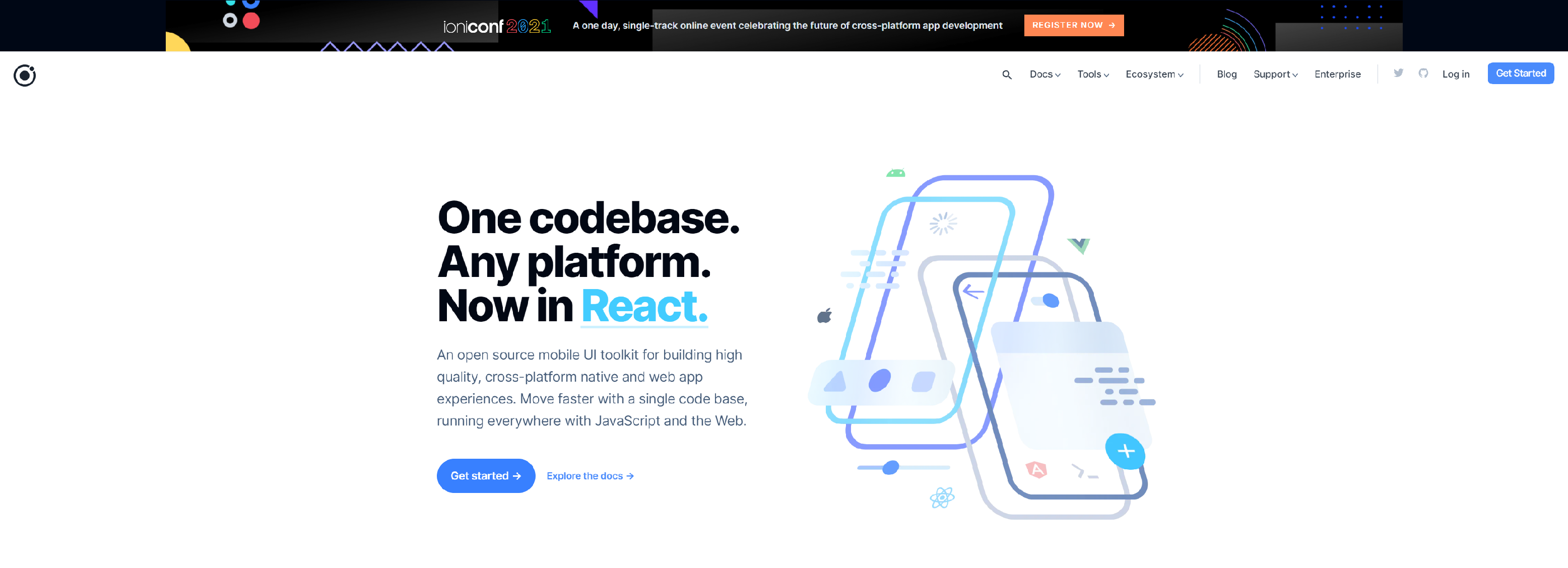
Ionic was first built on top of AngularJS and Apache Cordova; developed by Max Lynch, Ben Sperry, and Adam Bradley of Drift co. in 2013.
At present Ionic is based on a set of web components, i.e. Angular, React, or Vue.js. It is an open-source software development kit (SDK) used to develop hybrid mobile apps, desktop applications, and progressive web applications. Ionic uses HTML, CSS, and JavaScript as its base languages. It allows the user to choose any user interface.
Ionic is one of the world’s most popular cross-platform mobile application development frameworks. Applications like MarketWatch, Pacifica, Sworkit, etc, are built with Ionic.
5. PhoneGap (Apache Cordova)

PhoneGap was owned by Adobe systems. Initially, it was owned by Nitobi in 2011. Adobe system rebranded Nitobi as Adobe Phonegap. They later launched an open-source version of the software known as Apache Cordova. It uses CSS3, HTML5, and JavaScript to develop native applications. It can be used to build applications for iOS, Android, and windows.
PhoneGap’s backend is robust and allows developers to develop applications quickly and efficiently. One of the latest features seen in PhoneGap applications is that it can use the device camera, location, etc. This is because it taps on the device hardware. PhoneGap can be used by anyone for free.
6. NativeScript

NativeScript is an open-source framework created by Progress and the community in 2014. It uses JavaScript and TypeScript to build applications across both android and iOS platforms. Also, it supports both Angular and Vue frameworks.
Native Script allows you to use more than one frame in an application. The templates can also be upgraded to be compatible with Angular, TypeScript, and Java. It provides live sync and wet pack features that can be used simultaneously. Companies like QA Limited, Lorven Technologies use NativeScript.
7. JQuery
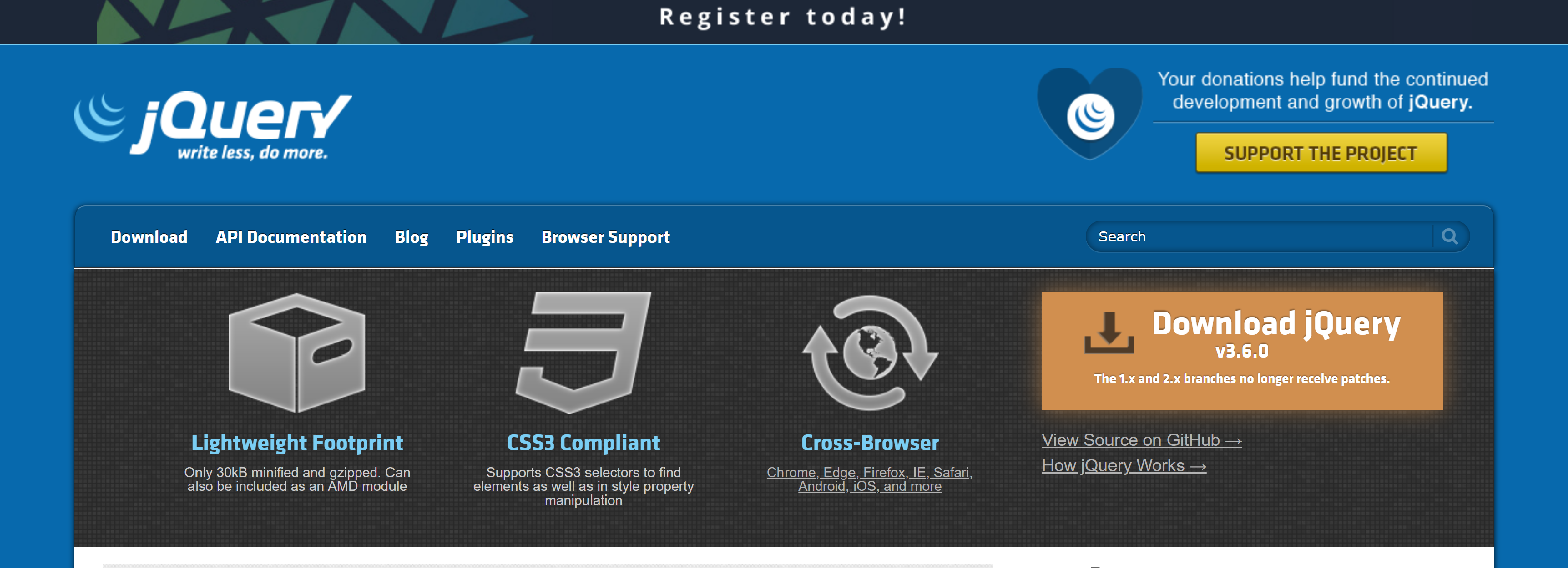
JQuery was developed by the jQuery team in 2006. It is a touch-optimized framework used to develop mobile applications. It can be used across all modern browsers and mobile platforms like android, iOS, windows, etc.
Using jQuery developers can create cross-browser applications compatible with all smartphones, and tablets. It is built with JQuery code. It has limited dependencies and is lightweight to optimize speed.
8. Sencha Ext JS
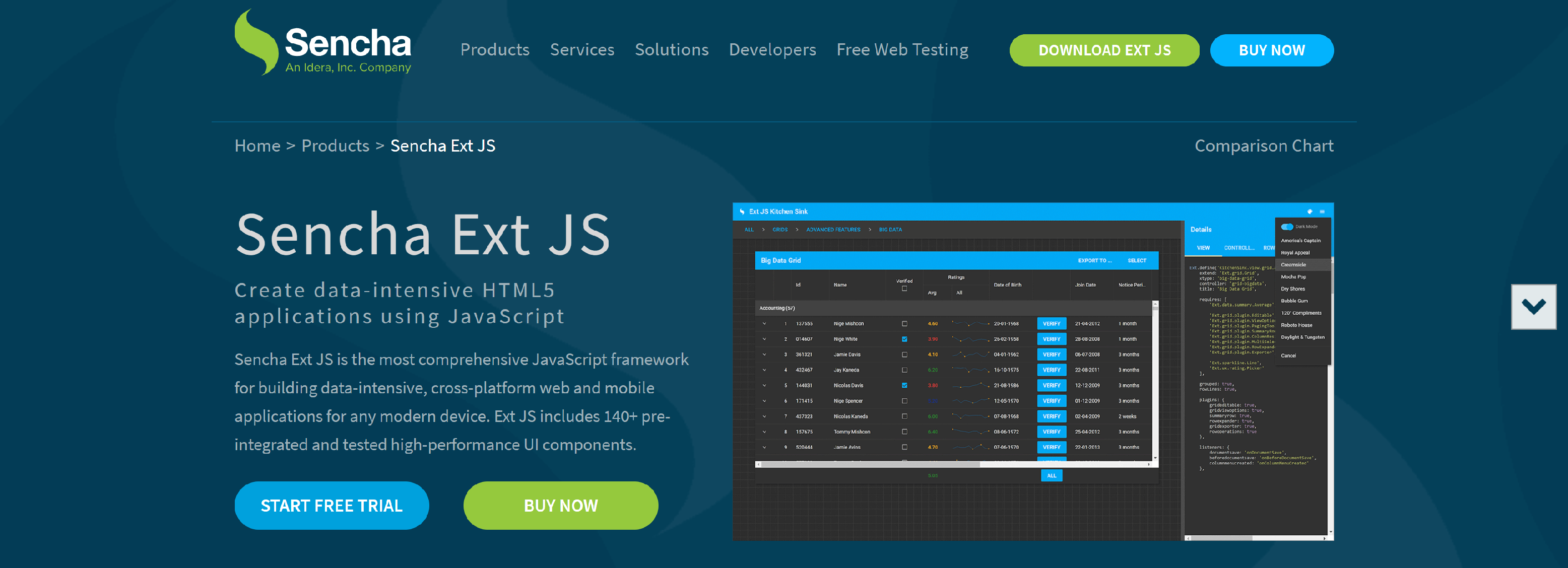
Sencha Ext JS was originally built as an add-on library extension of YUI by Jack Slocum in 2007. In 2010, Ext JS got merged with JQTouch and Raphael giving rise to a new organization called Sencha Inc. Ext JS. It uses pure JavaScript as its base language.
Ext JS is used for building cross-platform applications with the help of techniques such as Ajax, DHTML, and DOM scripting. It has been reported to have more than a hundred pre-integrated user interface components in the framework. It can be used to work with a large amount of data.
How to hire a mobile app developer?
It is not very difficult to build a mobile application if you know coding languages and how to use them around the mentioned frameworks. If not, then you need to hire a developer.
The first thing to keep in mind while hiring a developer is to know that we have to deal with the person for a long period. Hence, it’s necessary to have a good rapport. We will also need to pay that person a lump sum, all the more why we should make sure to choose the right person.
The purpose of building an app.
The two major reasons to build an app can either be for an existing business or starting a new company with that app.
If the app you require needs to possess complex features you will need to hire someone very good at the job, which means that all of it will be cost-intensive.
You need to be certain that the developer fits our budget.
Doing a background check.
To be sure that you chose the right person for the work, you should know whether the person has experience or not. Check the apps they have developed previously to be sure of their work.
The developer must also be dedicated to the work and give the amount of time required.
The key to building a good app is finding the right developer.